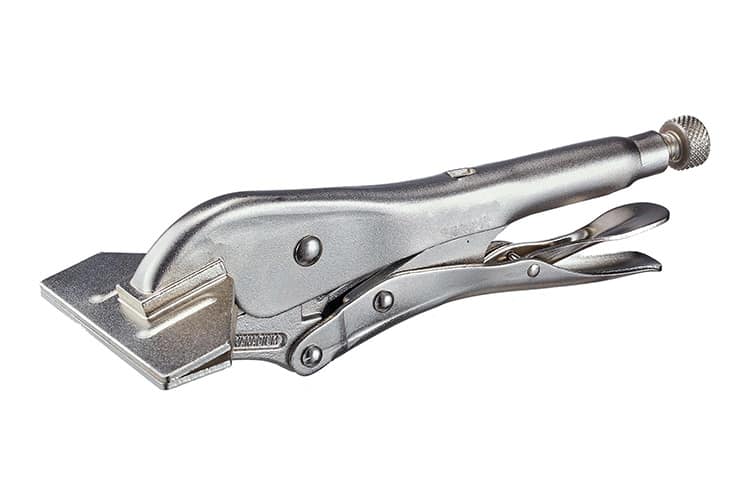In any professional workshop, clamps play an essential role. They are indispensable tools that make tasks easier and more efficient. Think of them as the unsung heroes of many projects, holding things in place so that other tools can do their jobs.
Clamps come in various shapes and sizes, each designed for specific purposes. But how many types of clamps are actually used in various industries? In this article, we’ll explore eight different types of clamps, shedding light on their unique functionalities and applications.
Understanding the variety and utility of these tools can be a game-changer for both hobbyists and professionals alike. So, let’s dive in.

C-Clamps
C-Clamps, named for their distinctive C-shape, are versatile tools primarily used for holding metal or wood pieces together. Their adjustability makes them suitable for a range of tasks in workshops and garages.
When using a C-Clamp, the screw mechanism allows you to adjust the clamp’s width, ensuring a secure grip on the workpiece. The screw usually features a swivel pad at the end, minimizing the risk of damaging the clamped material.
Bar Clamps
Bar clamps, also known as “F-clamps” due to their shape, are widely used for woodworking projects. They are ideal for gluing or joining large sections of wood together.
Their long, flat bars allow for an even distribution of pressure across a wider area. With their adjustable jaws, bar clamps can be tailored to various thicknesses, making them adaptable to many tasks.
Spring Clamps
Spring clamps function like the clothespins you might use at home. They have a simple mechanism – two handles and a spring, which provides the clamping force.
These clamps are great for light-duty tasks, such as holding sheets or small objects temporarily. Due to their simplicity, spring clamps are quick to apply and remove.
Hose Clamps
Hose clamps are typically used to secure hoses onto fittings. They come in various styles, from screw/band types to spring clamps.
Their main purpose is to prevent fluid leaks by providing pressure around the hose. In many industries, particularly automotive and industrial sectors, hose clamps are vital.
Toggle Clamps
Toggle clamps operate through a pivoting mechanism, which provides a high clamping force with minimal effort. They’re especially useful for repetitive tasks where quick clamping and releasing are required.
Their unique design ensures that once they are locked, the pressure remains consistent, offering reliability in various applications, from welding to electronic assembly.
Pipe Clamps
Pipe clamps, as the name suggests, are specially designed to work with pipes. They hold pipes in place for tasks like cutting, welding, or threading.
Featuring a long, threaded bar and adjustable jaws, pipe clamps are ideal for ensuring straight and accurate cuts or joins. Their length can be increased using longer pipes, making them quite versatile.
Locking Pliers
Locking pliers, often referred to by the brand name “Vise-Grips,” are a combination of pliers and a clamp. They can grasp onto objects and lock them in place, providing a secure hold.
These tools are especially useful in situations where a tight grip is needed but hand pressure might wane. The adjustable screw mechanism ensures that they can be modified for various tasks.
Edge Clamps
Edge clamps are specifically designed to apply pressure on the edges of workpieces. They’re crucial in metalworking tasks where the edges need to be held securely.
With a mechanism that allows the clamp to exert force both downwards and inwards, edge clamps ensure that the workpiece remains flat and stable. Their design is particularly beneficial when working on thin materials.
Conclusion
Clamps, in their myriad forms, are vital tools in various industries. From holding pieces securely for intricate tasks to ensuring leak-free connections, their importance cannot be overstated. As we’ve explored, there are numerous types, each serving a distinct purpose.
You might also be interested:
